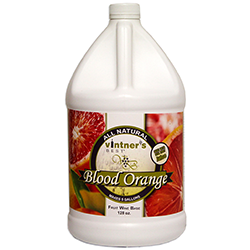What Are the Advantages of Wine Bases?
Posted by Matteo Lahm on 12th Jun 2024
Vintner's Best: A Practical Approach to Homemade Wine.
Vintner's Best Wine Bases are a practical and cost-effective solution to your home winemaking aspirations. The wines they produce are very respectable for the price. They also work great when combined with fresh fruit. If you've had less than stellar results with fresh fruit like spoilage, off flavors and aromas, or flabbiness from low alcohol levels, these wine bases are a great option. If you like fruit wines and don’t want to spend a lot of dough, you may have found your new drinking buddy bestie.
Now, let's be clear. Vintner's Best Wine Bases may not be the Rolls-Royce of winemaking supplies, but they sure do deliver a decent bang for your buck. They're crafted from quality concentrates, with sugars and pH levels adjusted to give you a solid starting point for your winemaking journey. And the cherry on top? They're significantly more affordable than purees and the higher-end fruit wine kits out there. Each gallon of wine base produces five gallons of finished wine. That's a whole lot of wine for a little bit of money.
Now, let's delve a bit deeper into how they are made. The primary ingredients are fruit juice concentrate, corn sugar, fruit acid, water, and natural flavors. The sugar levels and acidity are adjusted to achieve the right level of sweetness and tartness for a pleasant and drinkable wine, which is why using these bases is as simple as it gets. Just add water, pitch in the yeast, and let the magic happen. No need for a PhD in winemaking or a bank-breaking investment in equipment. As already stated, they produce a decent wine by themselves, and they are very user-friendly.
Now let’s say you are feeling a bit adventurous. You can also mix these bases with fresh fruit. If you went to your local farmers market and got a great deal on cases of peaches or blueberries, transforming them into wine will be a difficult task, even for a seasoned winemaker. All fruits other than grapes have low water to pulp ratios making the yield small. They also require a lot of pH and sugar adjustment to be suitable for wine yeast fermentation. That requires more advanced testing equipment and experience. This is where your wine bases come in to save the day. If you were to combine your peaches or blueberries with a peach or blueberry wine base, you will significantly increase your yield, and better yet, you will be much closer in both sugar and pH to the right conditions to make great wine. Compared to working from only fresh fruit, your acidity and sugar adjustments will be minimal and easier.
Now for just a tidbit of experiential know-how. Keep things simple with your ratios at first. Once you gain experience with this method, you might want to up your fresh fruit ratio in future batches. Wine bases call for the addition of 4 gallons of water. Substitute one gallon of fresh fruit for one gallon of water. This will be enough to infuse a lot of fresh fruit flavors while keeping your pH and sugar levels within a manageable range. Dilute your wine base first with 3 gallons of water and stir it thoroughly.
To measure your one gallon of fresh fruit, you have to prepare it. Remove pits, skins and whatever else will not be used then pulverize it as much as possible. Pour it through a mesh bag, tie it off and add it to your juice. Fresh fruit other than grapes often have a lot of pulp. Better all that pulp stays in the bag and does not settle to the bottom of your fermenter. You want to squeeze those mesh bags out as much as possible to mix your juice as evenly as possible.
Once you have completed these steps, you should test your acidity and sugar levels. Your target for sugars is 18 brix with a 3.5 pH. If your acid and sugar levels are high, add more water. If they are low, add sugar and acid blend. Do either process incrementally. Adding things are easier than taking them out. It is a good practice to dissolve both acid blend and sugar in water before adding them so you can get quick and accurate readings. Since fresh fruit is variable, you may have to make adjustments but this method will minimize your additions.
Once you have made your adjustments, pitch your yeast and let the games commence. Squeeze those mesh bags out twice a day to extract as much flavor and juice as possible. By the time your wine is ready to transfer, those mesh bags will have significantly reduced in volume at which point you can just give them one final squeeze and toss them.
Lastly, and just for the sake of argument, if you cannot test acidity, and you are not comfortable adding acid or sugar, you can cut a few corners with these proportions. If your total volume is less than 5 gallons after you have mixed your concentrate, water and fresh fruit, add additional water to get it to five gallons. Limiting your fresh fruit to one gallon will not alter the sugar and acid levels enough to cause big problems. The wine might not be as good as it could have been, but it won't change the composition enough to cause significant issues. You should still be within the pH range for your yeast to perform properly. Since fruit wines are typically back sweetened, even if it is a little tart, the sweetness will balance it. This is another advantage of working with a wine base. It helps maintain the consistency of your must because it is formulated to make wine. However, if you want to increase your ratio of fresh fruit in future batches, you should learn how to test and add acid and sugar.
In a nutshell, Vintner's Best Wine Bases offer a practical, affordable, and enjoyable approach to home winemaking. They may not be the top-of-the-line option, but they sure do provide a decent wine for the money, and they work great with fresh fruit. So, why not give them a whirl? After all, the joy of drinking a wine you've crafted yourself is priceless, especially when it’s good. Cheers to that!


